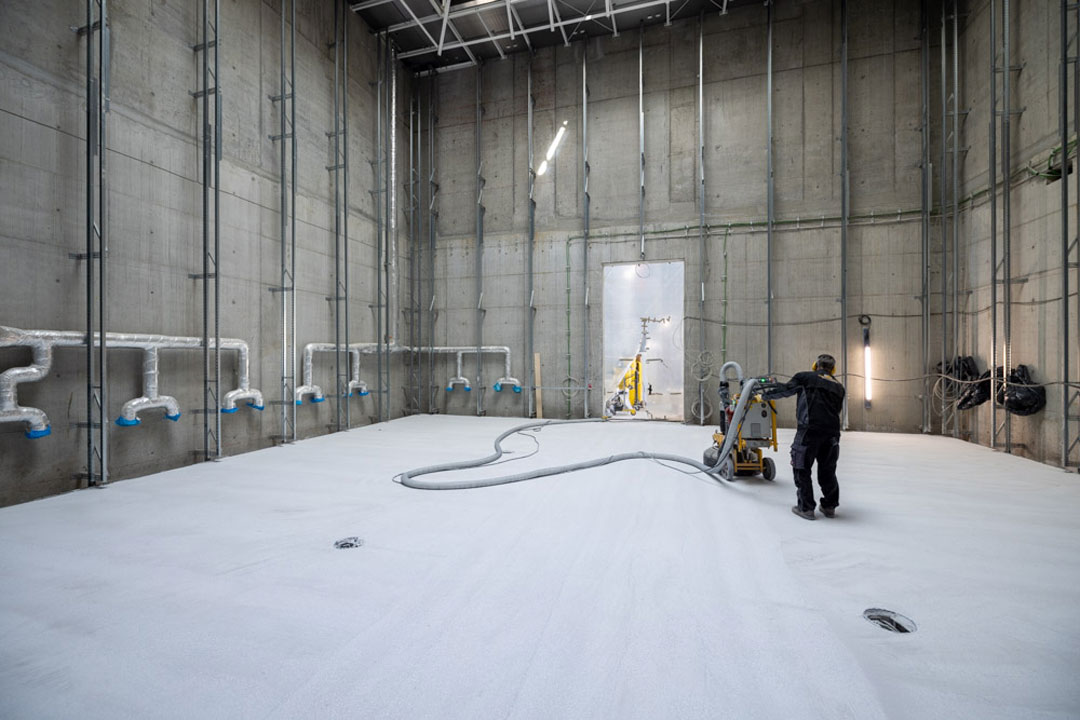2022-05-03
Building status report on 29 April 2022
In the last building site report we reported on the screed work as the basis for the floor coverings. In the meantime, the initial floor slabs could be laid and some of the raw shell feeling was removed from the Reinhard Ernst Museum. Three different floor surfaces await our visitors: granite, wood and terrazzo floors. Each floor comes from a completely different place, and each one requires a different preparation and installation method.
To select the floor coverings, the architects and the building owner Reinhard Ernst gave a lot of thought to the look, load-bearing capacity, wear and tear and maintenance of the extensive walkway areas in the museum. In addition to the long wooden floorboards made of oak, they decided on a durable green granite and a light grey terrazzo floor.
As with the façade, the natural stone experts at Hofmann were hired to lay the granite. The large blocks reached their premises in Werbach-Gamburg directly by ship and rail. There they were gated, i.e. they were cut into slices with powerful diamond wire saws and the surfaces treated using a water jet process. The slabs that weigh approximately 80 kilograms are currently being laid on the screed in a medium bed mortar and then impregnated – over a total area of 1,200 square metres and at a total weight of 150 tonnes. As Guido Geilen, head of Hofmann’s branch in Frankfurt, reports, the stone’s green colour is a result of its mineral composition and is only found in South Africa. He also explained that the stones are broken into certain sizes on site with as few offcuts as possible. Smaller floor strips are cut from the leftovers or gravel is produced and bricks are made from the saw slurry.
A custom-made light grey terrazzo floor is poured for the two exhibition spaces in daylight. For this purpose, the screed bearing has to be specially coordinated with the stone’s properties. Compared to wooden floorboards or granite slabs, an extremely homogenous surface is the objective in the case of terrazzo. Fortunately, we also have experts in this in house; Ronny Platzer from Foerg & Weisheit in Stollberg in the Erzgebirge can provide precise details about this. Based on his information, the durability of this floor depends on a detailed calculation of the binding agents, natural stone grain and colour pigments. Finally, the terrazzo stone is given a special impregnation treatment to make the surface water, dirt and oil repellent. Water vapour permeability is always maintained.

